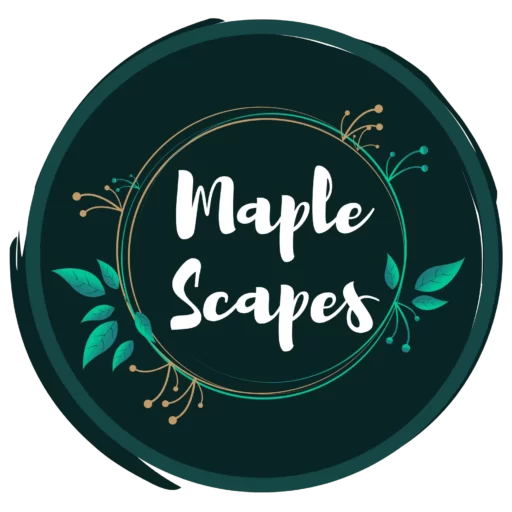We generally focus on the routine of cleaning indoors, which is the major reason most people skip lawn maintenance. Softscaping (part of landscaping) is an integral part of home maintenance.
However, as many gardening tools are available on the market, you may have a dilemma about what to buy. This article will give you a clear picture of the necessary tools that a lawn owner must have. Before digging into the details of lawn care tools, you must know that all instruments have distinct functions.
It is not always necessary to buy a comprehensive tool kit. Always go for the best from different brands. Here, you will be taken through essential landscaping tools for the upkeep of your house lawns.
🍁 Carts and wheelbarrows
Wheelbarrows, or carts, are a significant gardening tool. They help you move the plants, mulch, and soil around the garden. Not all carts are used for landscaping, but a few are. They are:
Garden Cart
These typical flatbeds and four-wheel carts are perfect for working with large quantities of materials. Some have hinged panels for convenient loading and unloading.
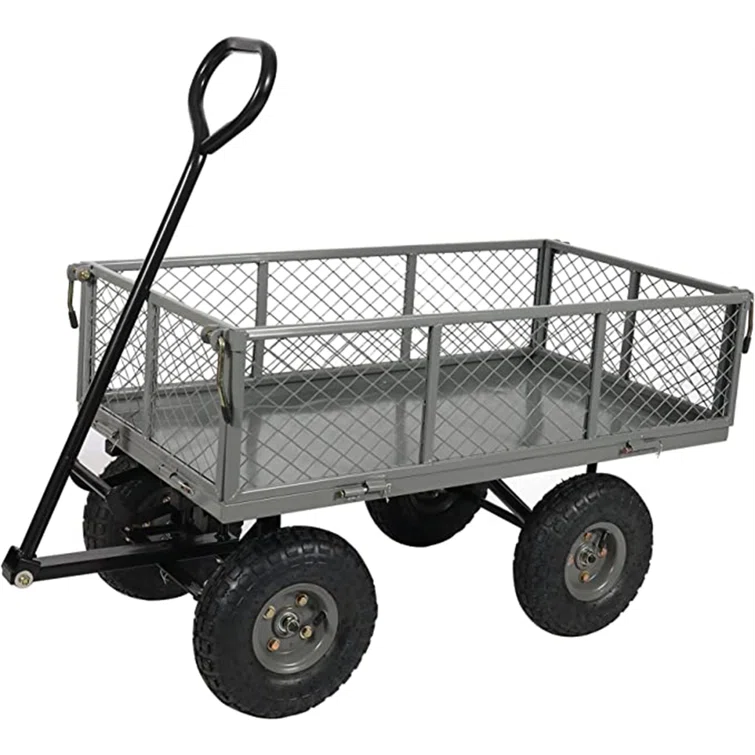
Foldable Cart
Foldable carts facilitate effortless transportation and easy storage. They are ideal if you have a small garden or are running out of space to store tools.
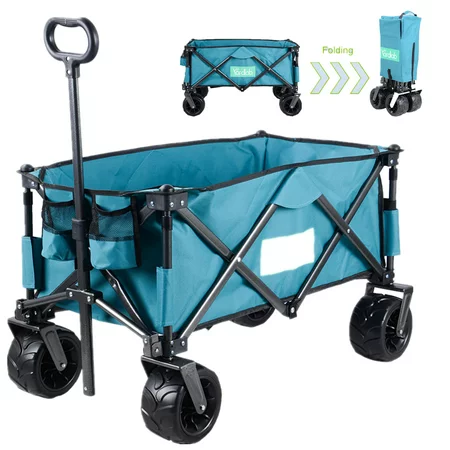
Dump Cart
They are partial twins of the garden carts. The only difference between the two carts is that the dump carts have a tilting bed, whereas the latter has a fixed one. The flexible design allows easy unloading of the soil or debris at specific zones.
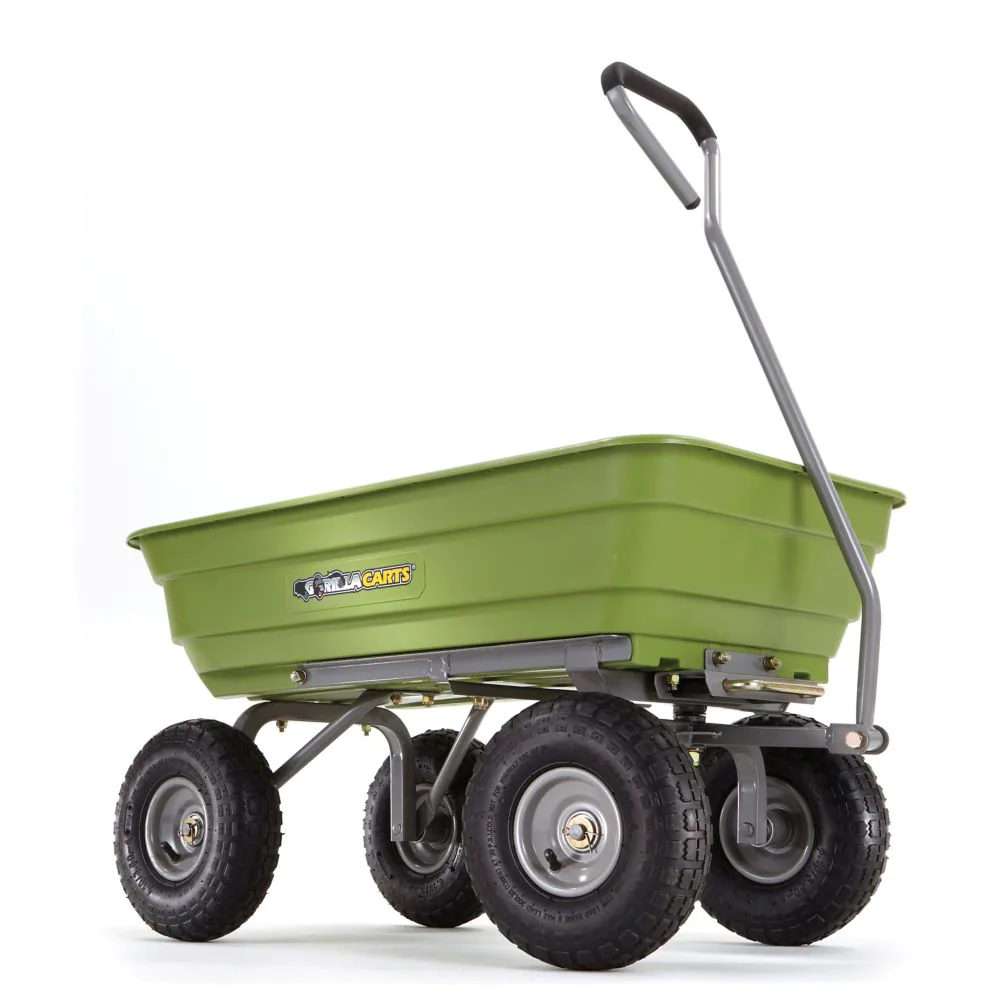
Traditional Cart
Traditional carts are generic gardening tools with a front wheel. The deep bucket design, along with two handles, is capable of handling various gardening maintenance tasks.

Note: Before buying one for your garden, check features like the wheel type, load carrying capacity, durability, maneuverability, etc. You must also check the basket’s height and the handles’ grip for post-use comfort.
🍁 Digging Tools
There are various kinds of digging landscaping tools. Each one has its unique function. We will walk you through these tools and their role in digging:
Garden Hoe
The garden hoe has two main uses: It helps spread and move mud or soil easily and allows you to cut weeds and foliage with a stroke. The tool is available in different widths to make gardening easier.
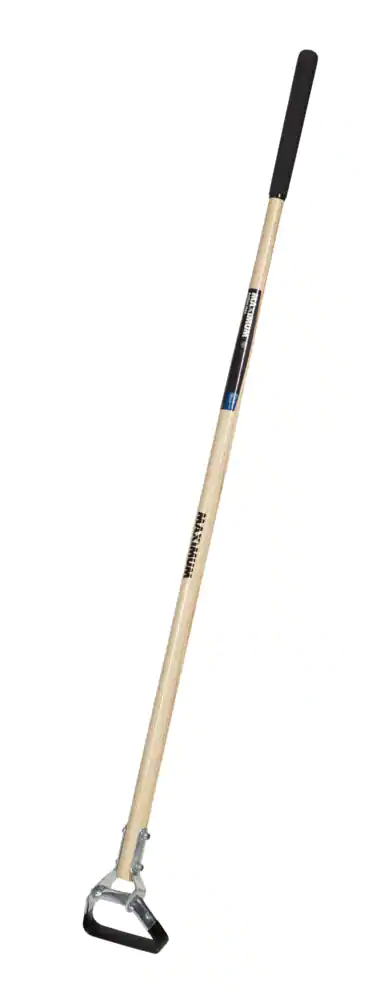
Hand Trowels
This small digging equipment is used for lighter gardening jobs, such as digging small holes, planting seeds, and unbinding the roots of tough weeds.
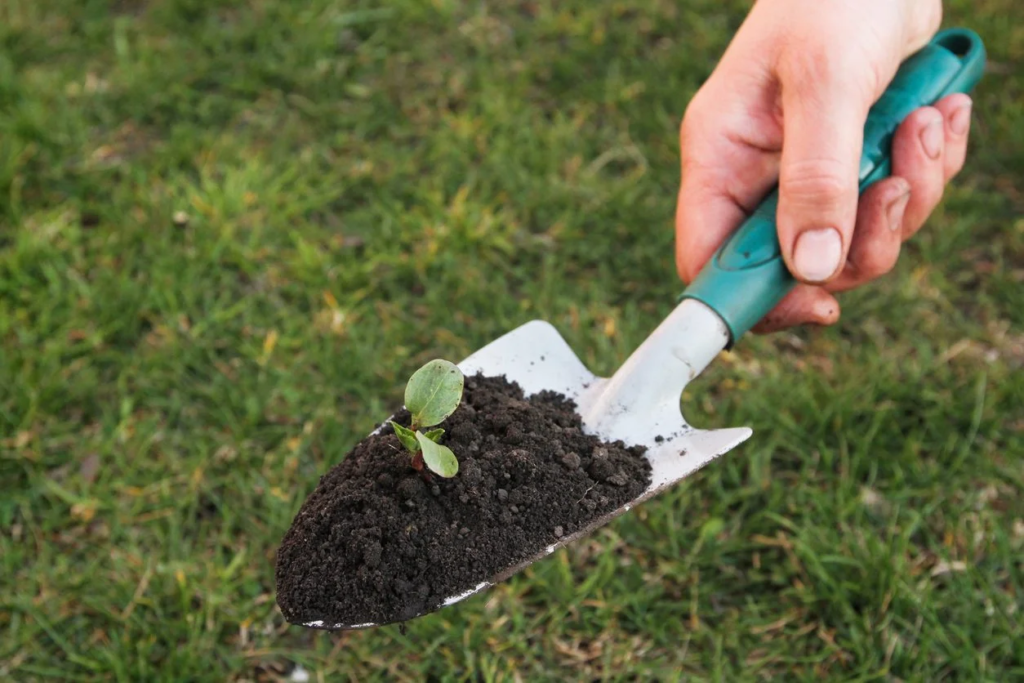
Shovels
The role of shovels in gardening is inevitable. They are generally used for moving soil, digging large holes, and transferring gravel. When buying a shovel, you must examine the handle’s comfort and the blade’s durability.
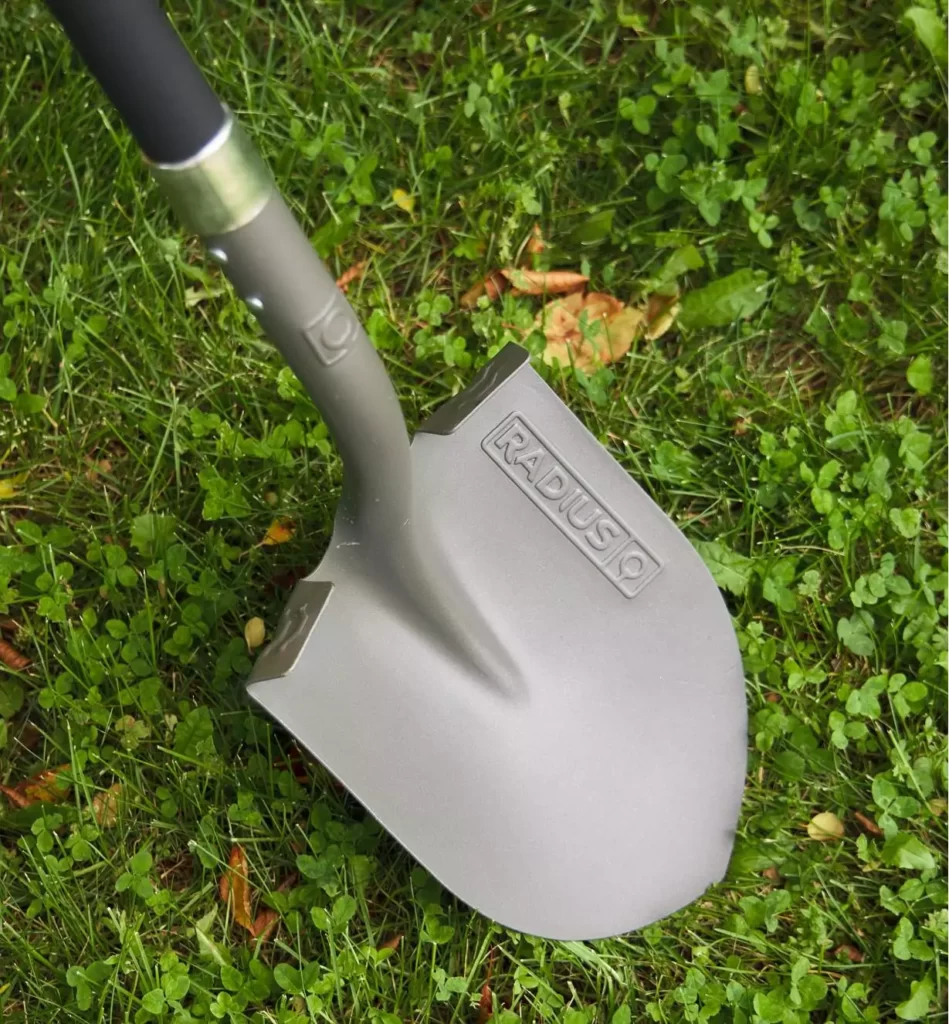
Spade
They are partially similar to the shovel in terms of function and look. However, their blades are square-shaped and narrow. You can use them for digging trenches and edges or planting plants. Sometimes, they are also helpful in eradicating turf and cutting through thick roots.
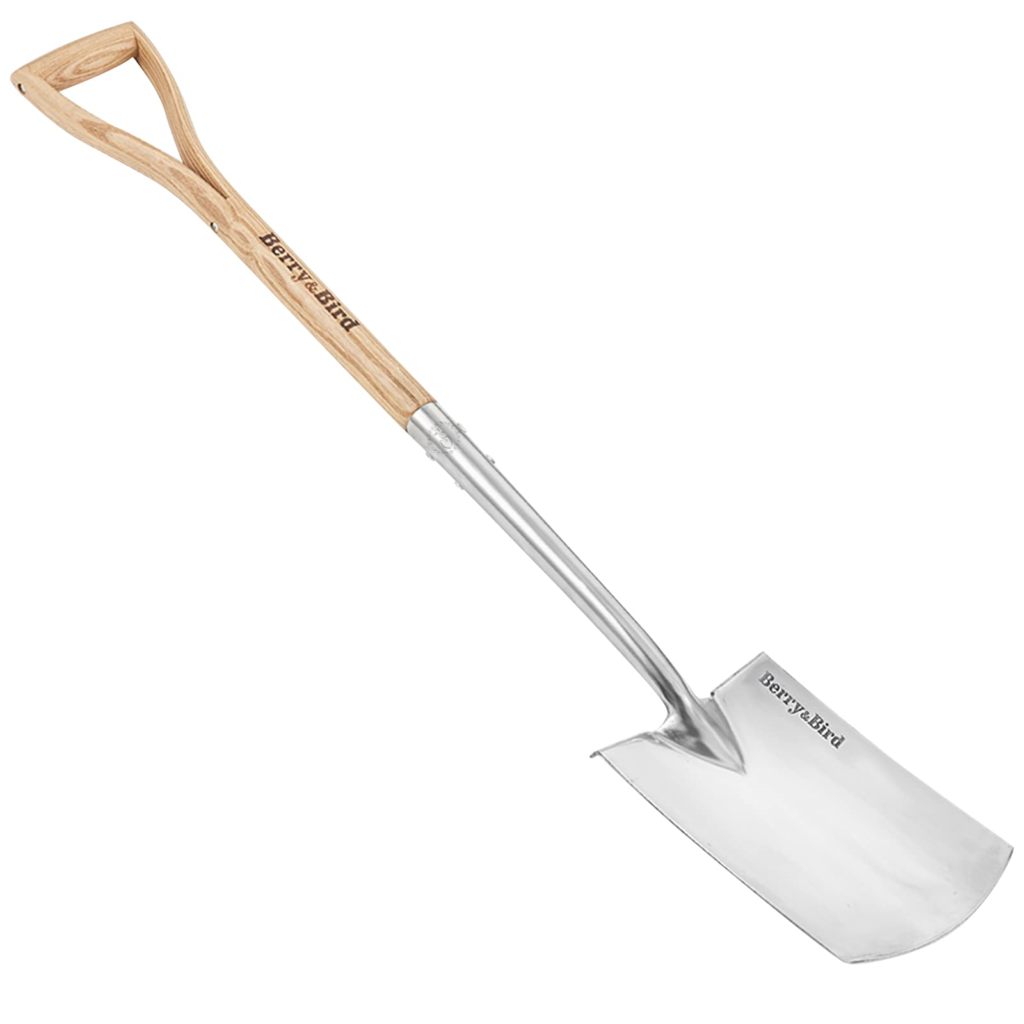
Garden Fork
The multiple iron tines of the garden fork loosen the compact soil and can turn the compost. If you have a large garden bed, buy Garden fork landscaping tools for future benefits.
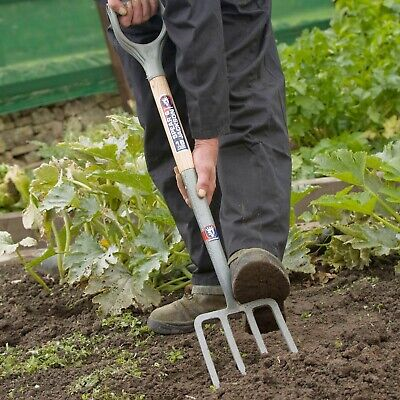
Mattock
It is a combination of an adze-like blade and an axe-like blade. It is mainly used for rock removal and trench digging. It is an ideal product for breaking compacted, hard soil. It is a versatile landscaping tool used for various chopping and digging tasks.
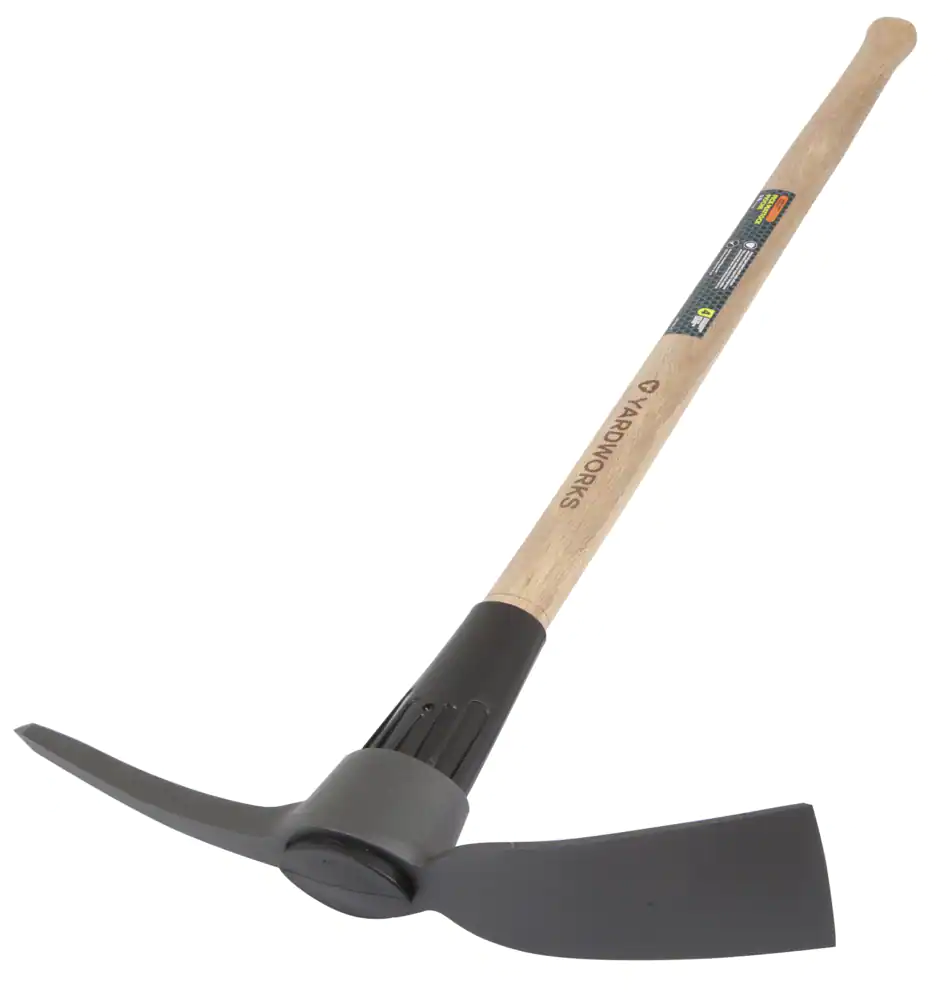
Hand Cultivator
A hand cultivator has many prongs that help aerate the soil. It is helpful in preparing the soil for planting or weeding.
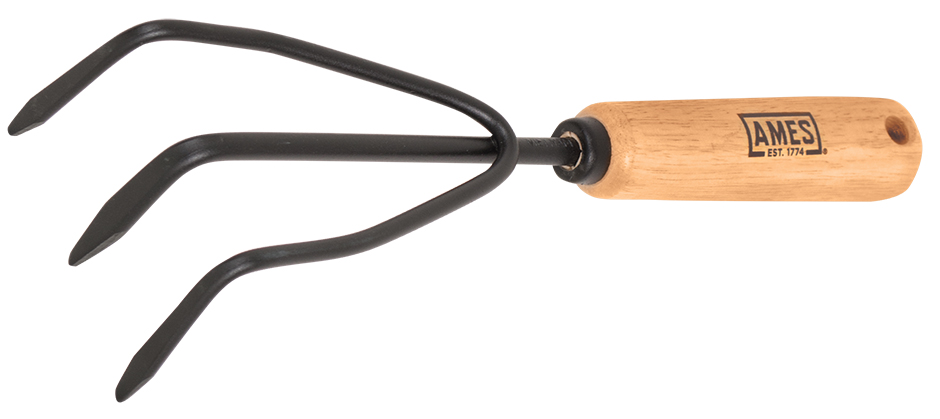

🍁 Aerators
Aerated soil is exceptionally healthy for a lush green garden. Different types of aerators are useful for gardening enthusiasts and widely used as landscaping tools by businesses and homeowners alike:
Spike Aerator
The spikes of the spike aerator are inserted deep into the soil and pushed over the surface. They are helpful for light aeration of soil but not ideal for plugs of soil.
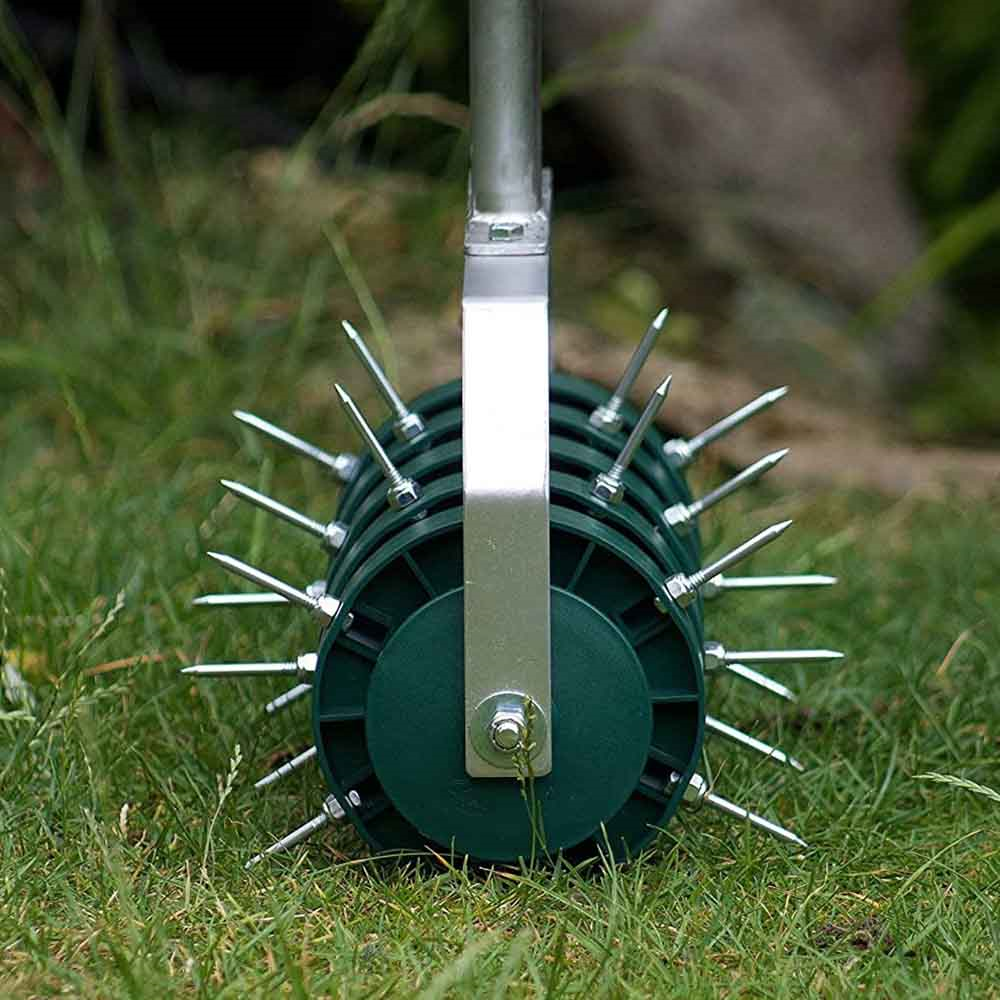
Manual Core Aerator
A manual core aerator has a long handle and hollow tines at its bottom. It is best for plugging soil in medium—to small-sized gardens.
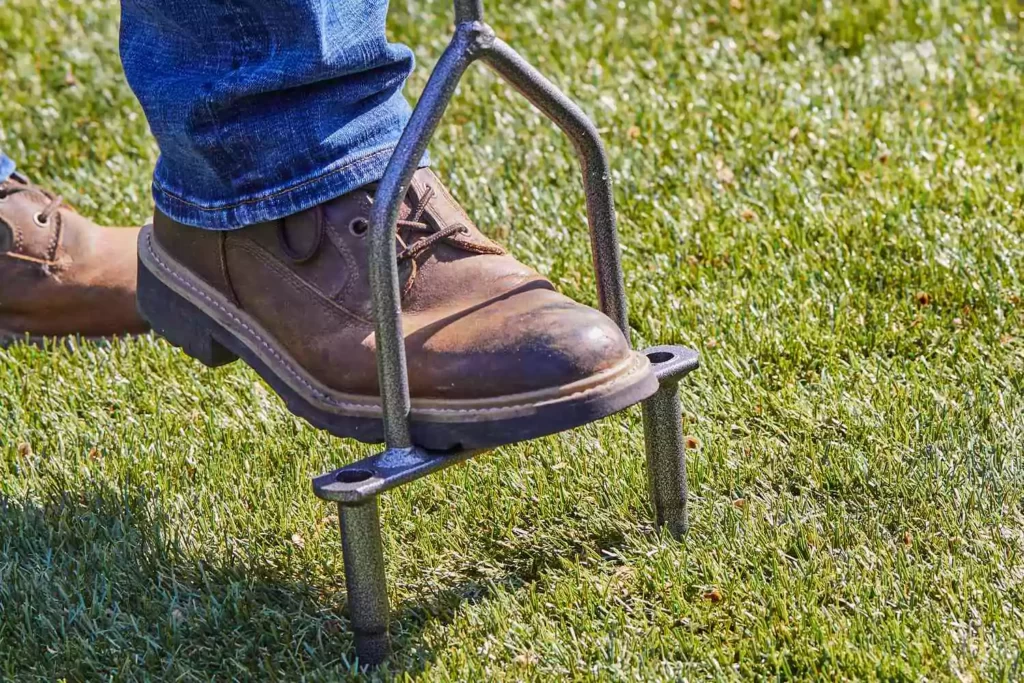
Tow-Behind Aerator
A tow-behind aerator is one of the most time-saving tools for large garden areas. It is recommended for professional use and is commonly attached to a lawn mower.
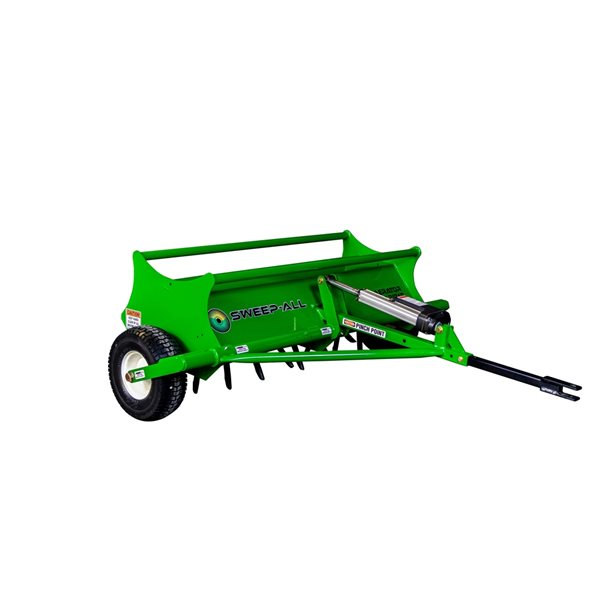

🍁 Rakes
The rakes are versatile tools that are designed for a wide variety of tasks, such as:
Shrub Rake
The shrub rake is a tiny-sized rake needed especially for flower beds, shrubs, etc. They are also helpful for small areas, collecting debris, and leveling soil.
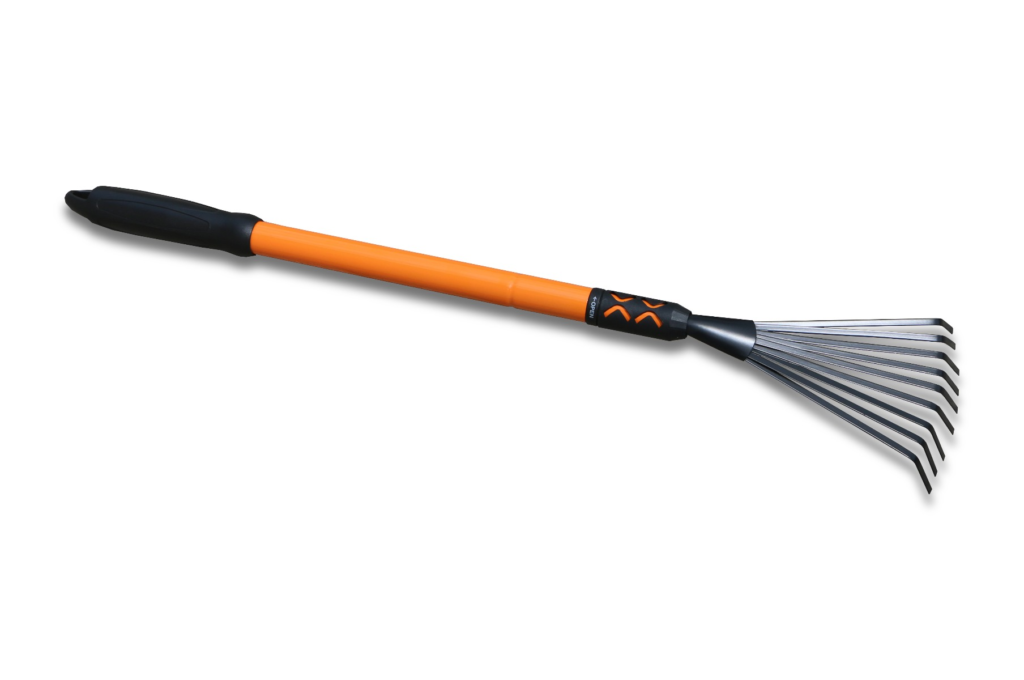
Leaf Rake
As the name suggests, it is designed for clipping grass, collecting leaves, etc. The flexible tines attached to the fan-shaped head are good for maintaining the garden floor, especially during the fall, the leaf-shedding season.
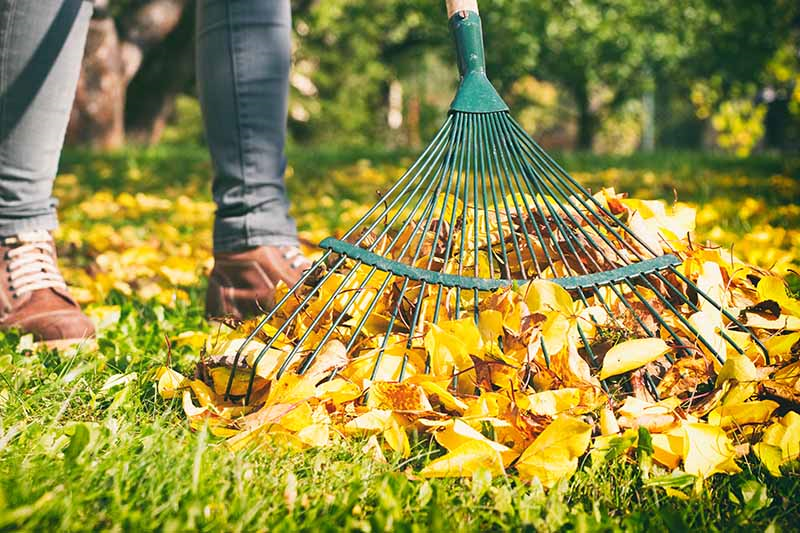
Garden Rake
This popular garden rake has robust tines and a sturdy head for leveling the soil and breaking dirt clumps. It can also be used to remove debris or pebbles.
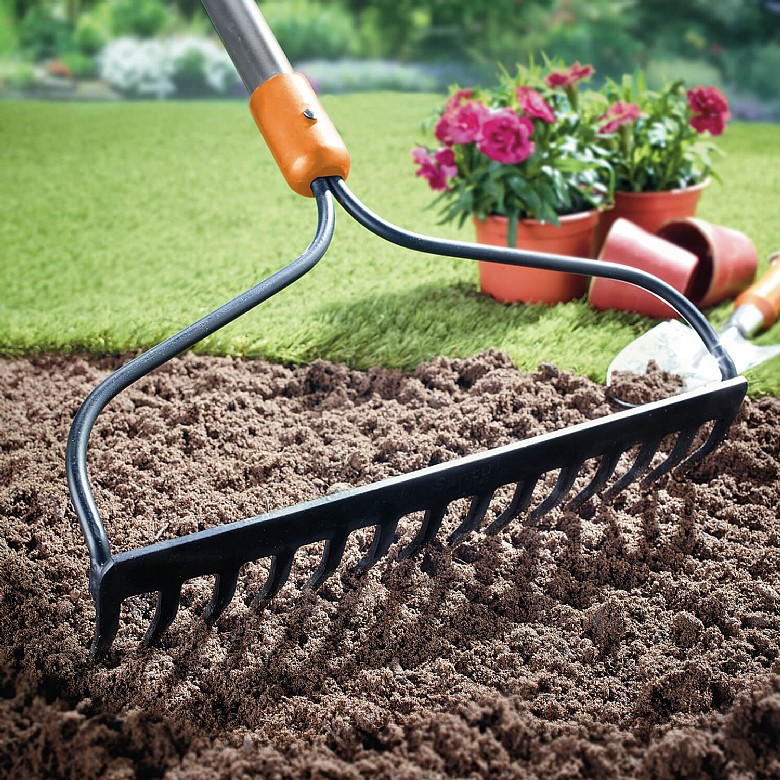

🍁 Fertilizer Spreaders
Spreaders are one of the most significant tools in landscaping. With these tools, you can easily spray an even quantity of fertilizer on the soil bed. When choosing a fertilizer spreader, you must consider factors like spreading capacity, method of operation, and holding capacity.
There are two categories of dry spreaders: rotary and drop spreaders and spreaders for liquid chemicals.
Drop Spreaders
The drop spreaders are ideal for those areas where hand precision is brutal. The swath of product emerges from a narrow yet wide opening under the spreader. The calibrated coverage increases the chance of covering an area more than once.
The user can regulate the spread of the outlet between the wheels. The only con of the product is that, unlike rotary spreaders, it does not cover large areas.
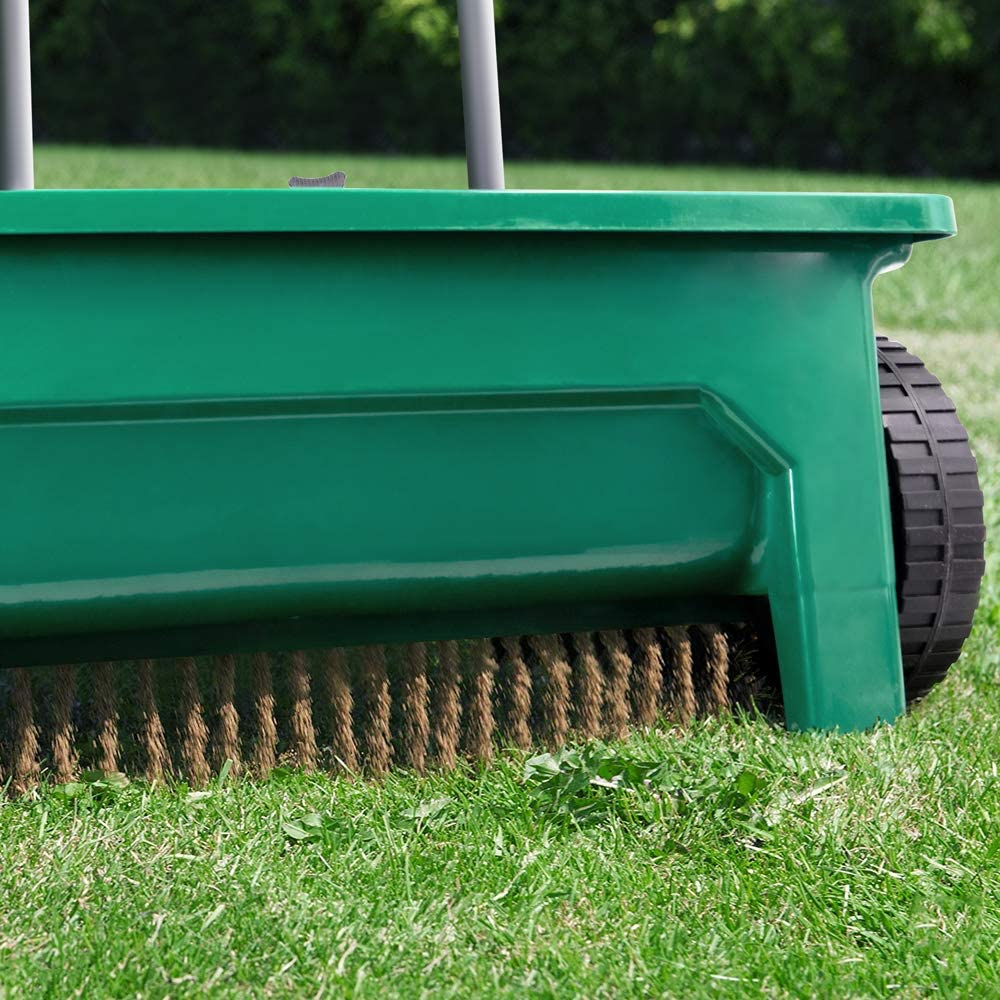
Rotary Spreaders
The rotating base plate in the rotary spreader is a multitasker as it can disperse seeds. They can spread in an area three times wider. However, the precision of these spreaders is mostly. They are available in sizes ideal for large lawns, tiny gardens, etc.
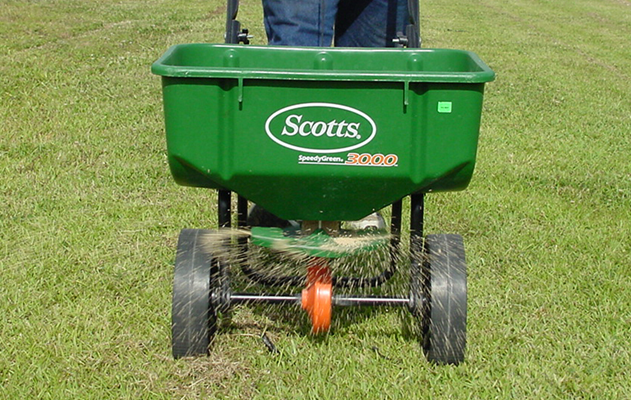
Liquid Spreaders
The chemical sprayers act as the perfect liquid fertilizer spreader. It automatically mixes the proportion of chemicals with water before throwing the liquid out of the nozzle. Although spraying liquid fertilizer gives quick, effective results, the solution dissipates quickly.
Thus, regular use may hit your pocket. Moreover, it has the most incorrect precision of the other two spreaders.
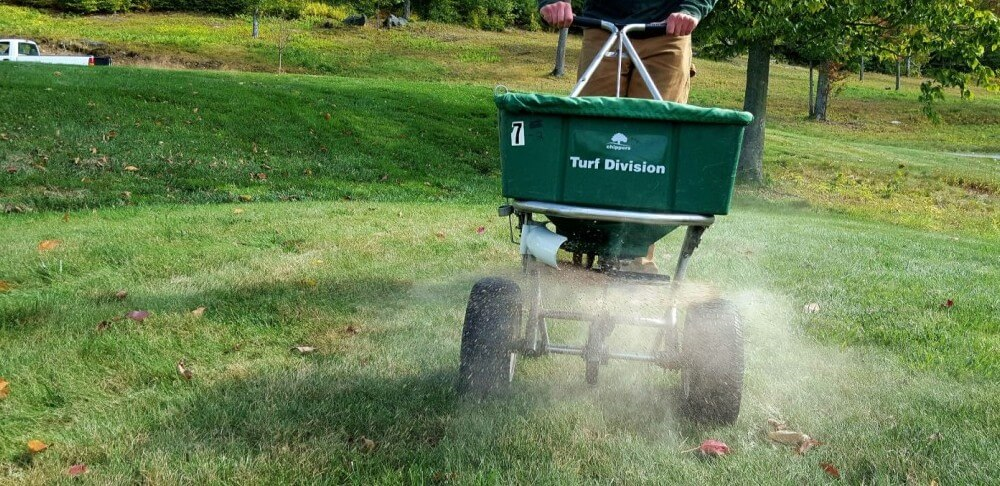

🍁 Garden Stakes
Garden stakes are used to support heavy plants. Thus, you must select durable ones to help your plants. They are available in three materials: plastic, wood, and metal. Each of these materials has its own unique set of advantages and disadvantages.
For example, plastic garden stakes work well to support lighter plants. On the other hand, metal stakes are needed to support heavy greens. The shape of the stake also plays a key role in bracing.
Ring-like Support
Plants that have multiple stems need ring-like garden stakes. They allow the stems to grow through the grid and help sprout fruits. These stakes are widely preferred, but removing them harms the plants.
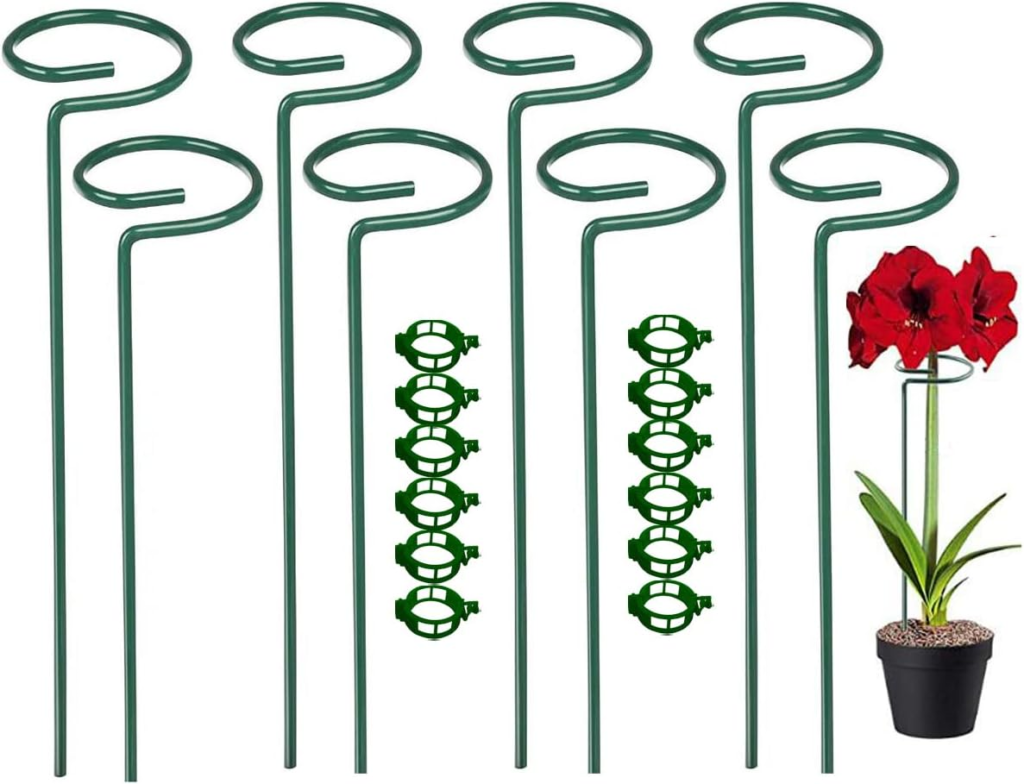
Trellis
It stops the plants from growing horizontally so that they grow straight and upward. Pole beans are the plants that commonly grow sideways.
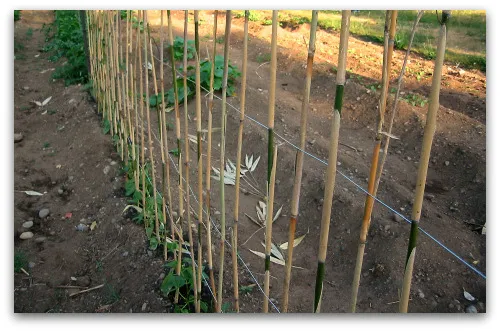
Single Stake
It is the most often used plant support. The single stake is placed around 6 inches in the soil, and the climbers are then tied to it with garden ties. The ties at certain intervals ensure the delicate plant does not fall off during harsh weather.
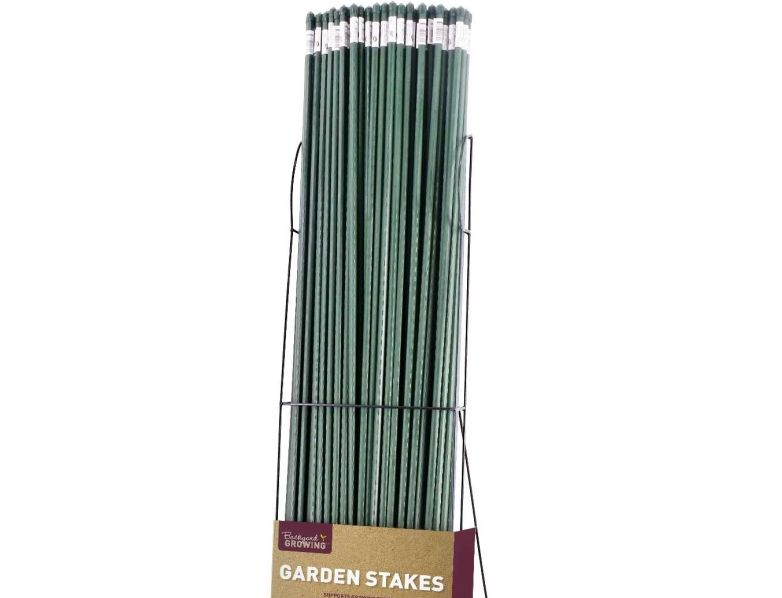
Cage
The cages are similar to those of the ring-like support. The significant differences are that they are taller, have open mouths, and provide support from every angle. They are used to support young plants and tomatoes.
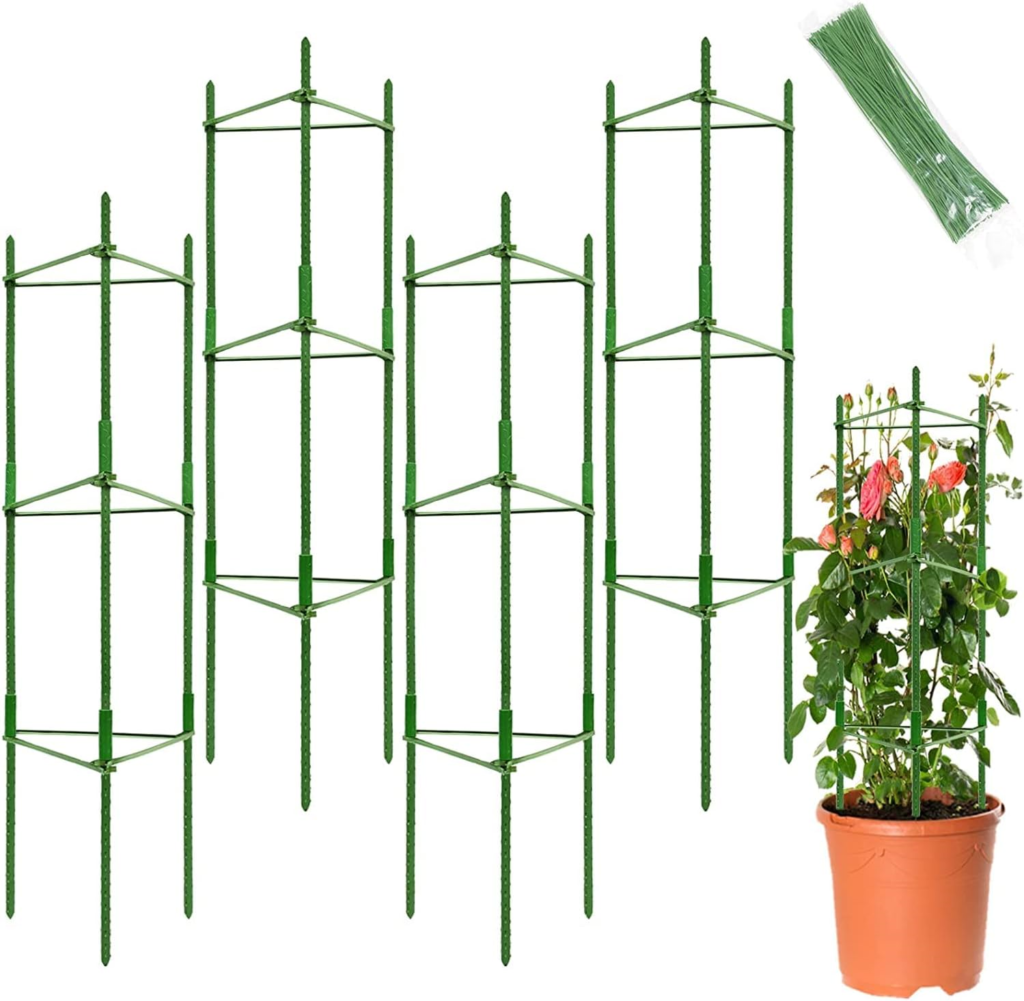

🍁 Garden Tool Organizers
Finding the proper storage for garden tools is tricky. The reason is the different size and height of the gardening tools. Organizing them in the right way will keep your passion for gardening alive. Before shopping for one, you must evaluate your needs and other features. You can opt for the following kinds of gardening tool storage as per your choice:
- Wall Mount: This storage tool rack is designed to suspend heavy-duty gardening tools. The wall-mount organizer does not require assembly and is very easy to install.
- Canvas Bag: The canvas bags have multiple compartments to store a variety of tools. The handles allow you to carry the tools anywhere.
🍁 Sprayers
Sprayers are essential tools for home gardeners in Canada to apply pesticides, herbicides, fungicides, or liquid fertilizers to their plants. Here are some types of sprayers that you might find valuable:
Handheld Sprayer
Handheld sprayers are compact and portable, designed to be operated with one hand. They are suitable for small to medium-sized gardens or specific plant treatments. Handheld sprayers typically have a pump mechanism that builds pressure to deliver a continuous spray. They come in various sizes and capacities, with adjustable nozzles to control the spray pattern.
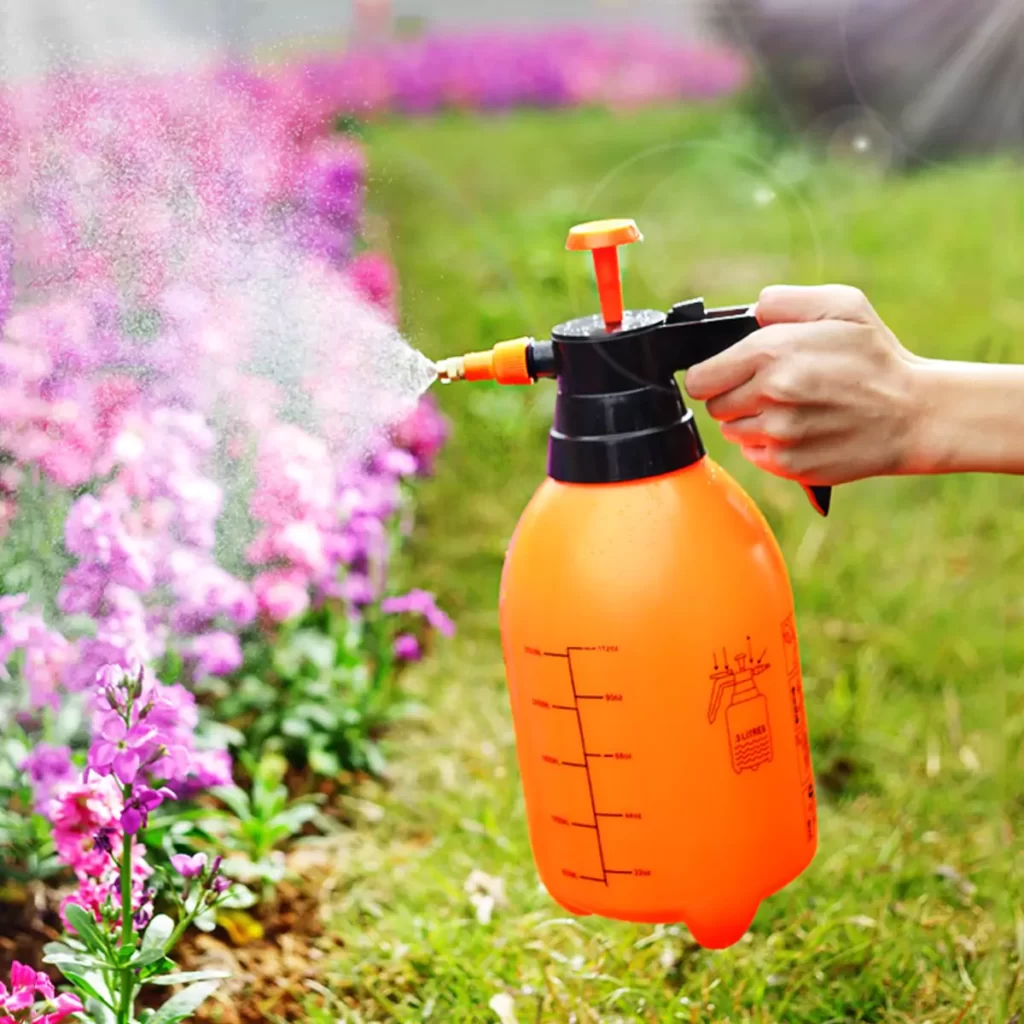
Backpack Sprayer
Backpack sprayers are larger and worn on the back, distributing the weight evenly for comfortable use. They have a larger capacity than handheld sprayers and are suitable for medium- to large-sized gardens or areas with dense vegetation.
Backpack sprayers typically feature a hand-operated pump or battery-powered mechanism to generate spraying pressure. They offer a more extended reach and can be equipped with different nozzle types for specific applications.
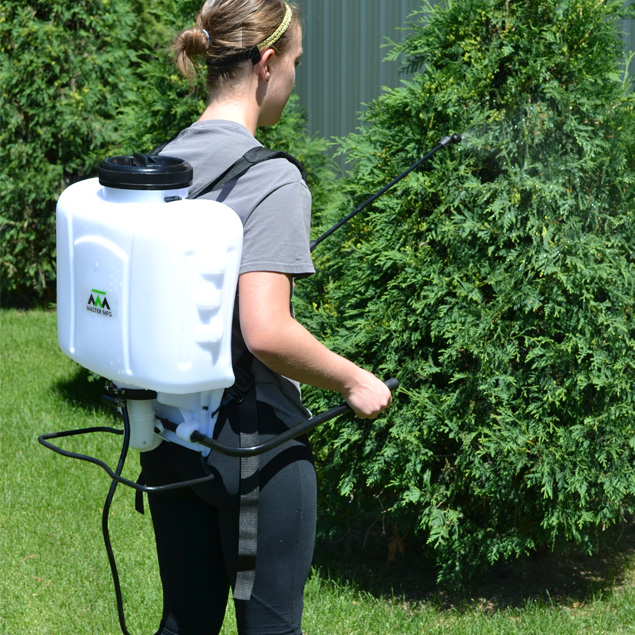
Wheeled Sprayer
Wheeled sprayers, garden carts, or tow-behind sprayers are ideal for more extensive gardens or properties. They feature a tank mounted on wheels, making them easy to maneuver and transport. A hand pump typically powers wheeled sprayers or can be attached to a garden tractor or ATV for towing. They have larger capacities and are suitable for extensive spraying applications or areas with challenging terrain.
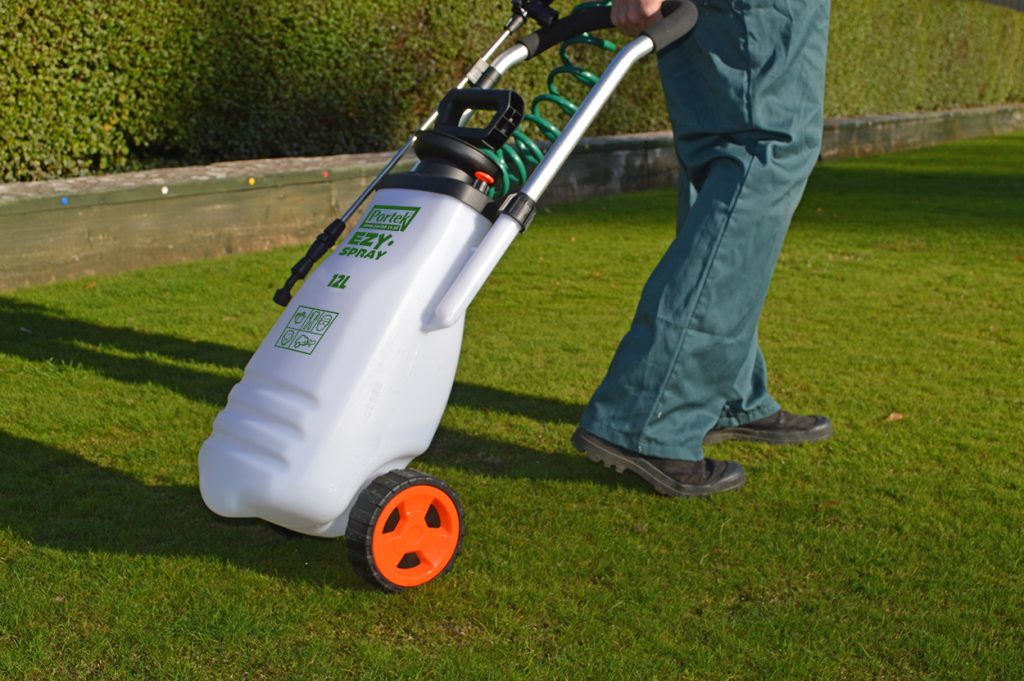
Hose-End Sprayer
Hose-end sprayers are attached to a regular garden hose and draw the concentrate directly from a container or bottle. Gardening tools like this offer convenience and ease of use, eliminating the need for manual pumping or carrying a sprayer.
Hose-end sprayers usually have adjustable dials or settings to control the dilution ratio and spray pattern. They are suitable for smaller gardens or spot treatments.
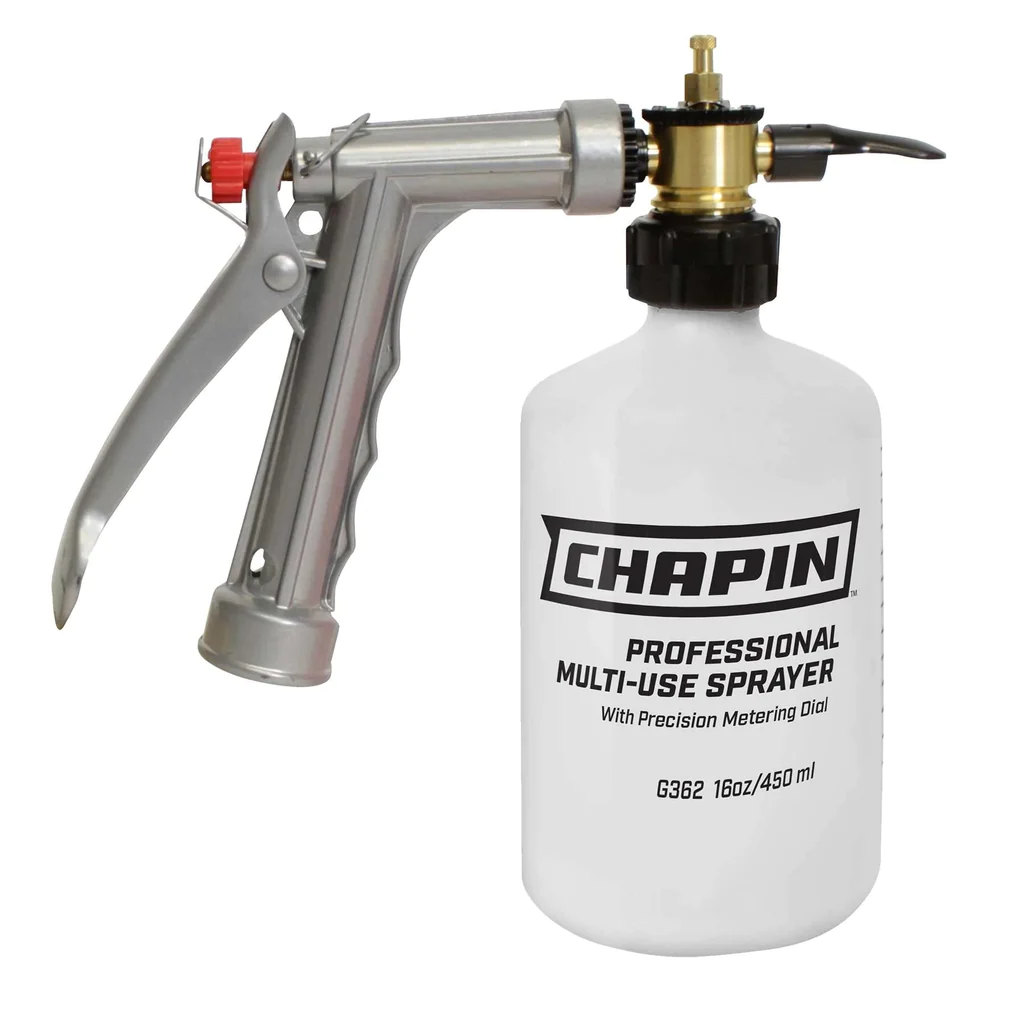

🍁 Gardening Kneelers
Gardening kneelers offer the utmost comfort to your knees while working in the garden. The following gardening kneelers are the number one choice of both professionals and gardening addicts:
Kneeling Stool
It prevents you from kneeling directly on the ground. The padded cushion and robust frame provide comfort for your shins and knees. Many of these tools come with foldable options for convenient storage.
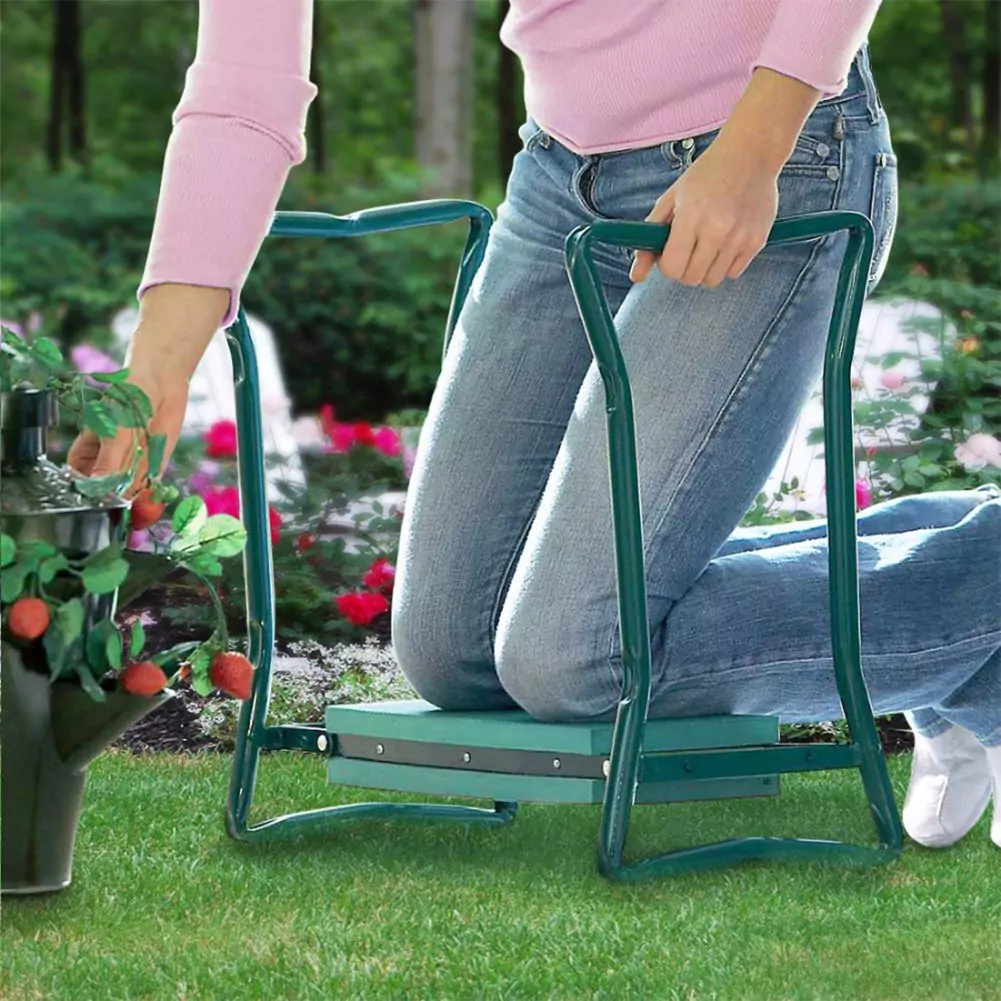
Foam Kneeling Pad
Foam pads are the most affordable option for resting your shins and knees. Due to their foam composition, they are even suitable for placing on damp ground. Foam pads also protect the knees by creating friction against the ground.
You can get a polar bear kneeling for around $10 from Lowes. They are a non-Canadian company, but you get a good product delivered to your home.
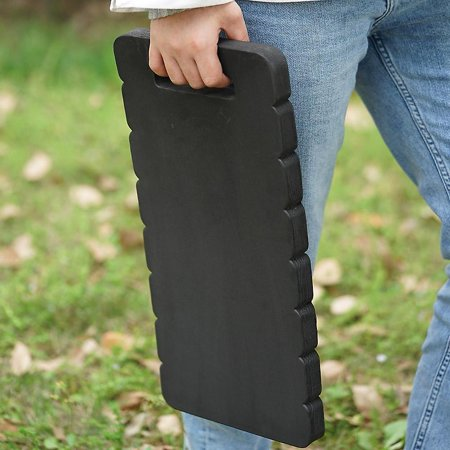
- Kneeling Pad
The current kneeling pads have handle options. Thus, when you get up from a kneeling position, the handles offer stability.
- Kneeler Bench
The kneeling bench offers the dual functions of sitting and kneeling. The framed, cushioned structure is a seat on one side and a kneeler on the other. It is good for people with limited mobility and those who prefer to sit while gardening.

🍁 Gardening Gloves
Gardening gloves protect the hands from thorns, blisters, and splinters. Thus, buying gloves for comfort, protection, and durability is important.
Nitrile Gloves
These gloves offer a good grip even when handling small tools or doing delicate work. They are lightweight and thus support a wide range of gardening tasks.
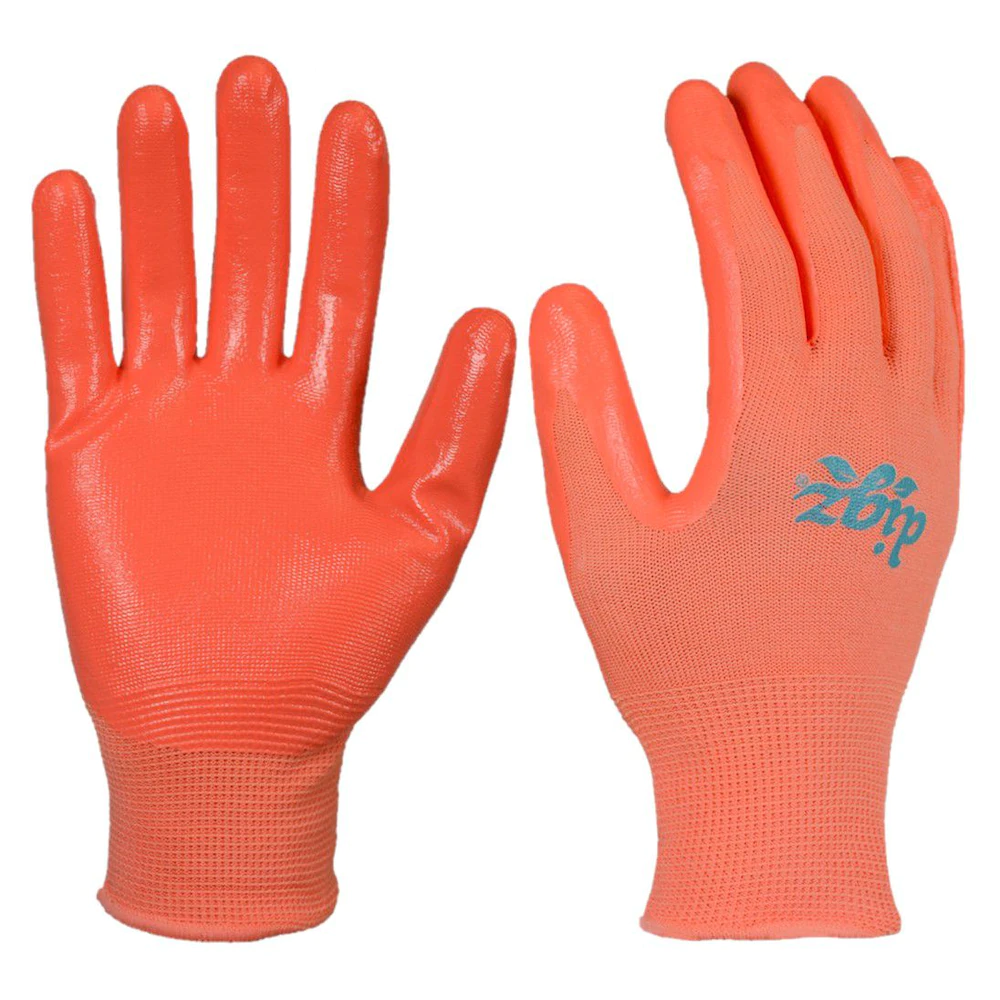
Leather Gloves
Leather gloves are also popular for their durability. They provide better protection against rough surfaces, abrasive objects, and thorns. While working with logs or rocks, you must always wear leather gloves.
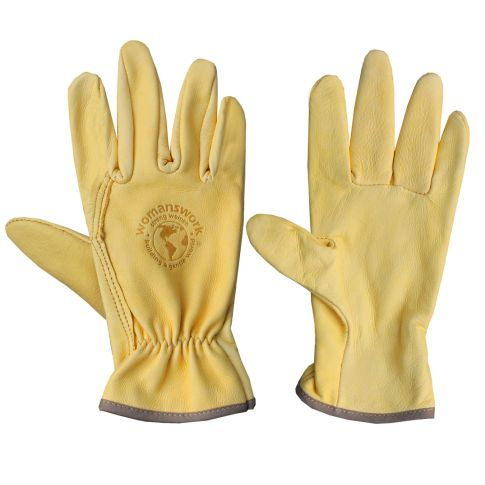
Cotton Gloves
The gloves are the most breathable. Nevertheless, cotton gloves can only be used for light gardening tasks like transplanting and planting seedlings. They are not compatible with sharp objects or thorns.
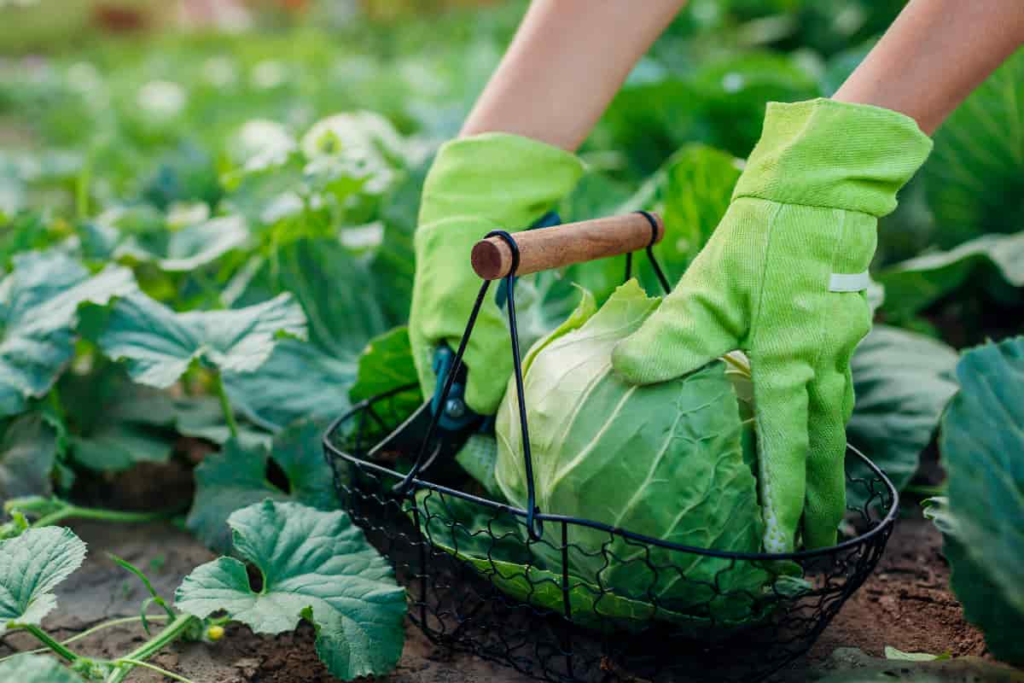
PVC Gloves
They are essential for damp and muddy garden conditions. Typically made with PVC or rubber, the gloves act as a waterproof agent and protect the hands from wet soil, water, and moisture.
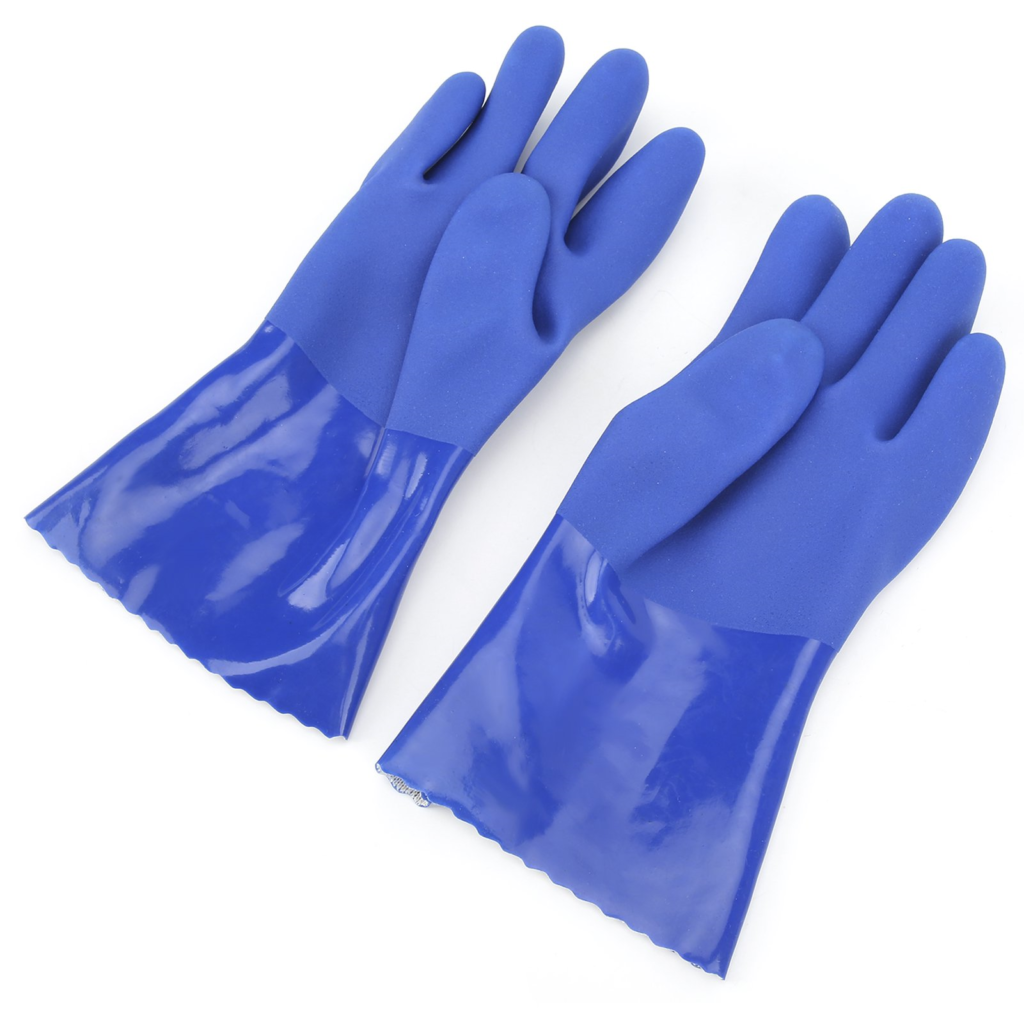
Gauntlet Gloves
The gauntlet gloves have extended cuffs, created only to protect the forearms from scratches, irritants, and thorns. It is perfect for tasks like pruning roses or managing thorny vegetation.
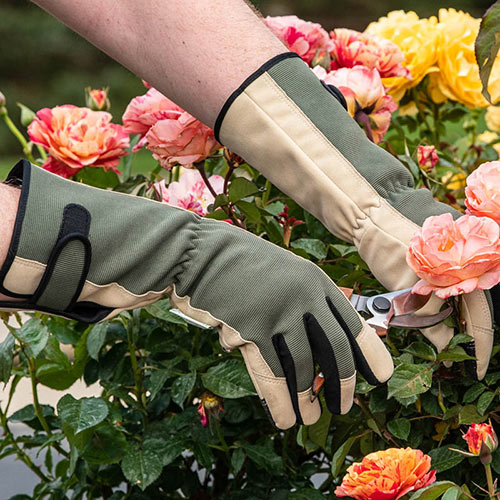

🍁 Gardening Hoes
With gardening hoes, you can perform one or more gardening duties like cleaning the weeds, cultivating soil, and shaping the garden beds.
You can get one from Gregg Distributers (Canadian) at around $30 or less.
The various gardening hoes are:
Scuffle Hoe
The paddle-like-shaped blade is used to cut the weeds from the surface. The bale is pushed forward and pulled back to remove the shallow-rooted weeds from larger areas at a time. Though it slices through the soil, there is minimal soil disturbance.
Warren Hoe
These hoes have circular, heart-shaped blades with sharp edges. It is used for removing weeds from narrow rows and tight spaces. The other popular name for the Warren hoe is the hoop hoe.
Collinear Hoe
The collinear hoe, also called a loop hoe or hula hoe, features a loop-shaped blade that oscillates back and forth under the soil surface to cut weeds.
Garden Hoe
The rectangular blades of garden hoes have a downward angle. The garden hoe is designed for cultivating and breaking up compacted soil, creating furrows for planting, and moving soil or mulch.

🍁 Garden Shears
Gardening shears are essential for trimming, shaping, and maintaining plants in your garden. The different types of shears are needed for different purposes. Have a look:
Bypass Pruners
They have two curved blades that pass by each other, like scissors, when cutting. Bypass pruners provide clean and precise cuts, making them suitable for trimming live branches, stems, and delicate plants.
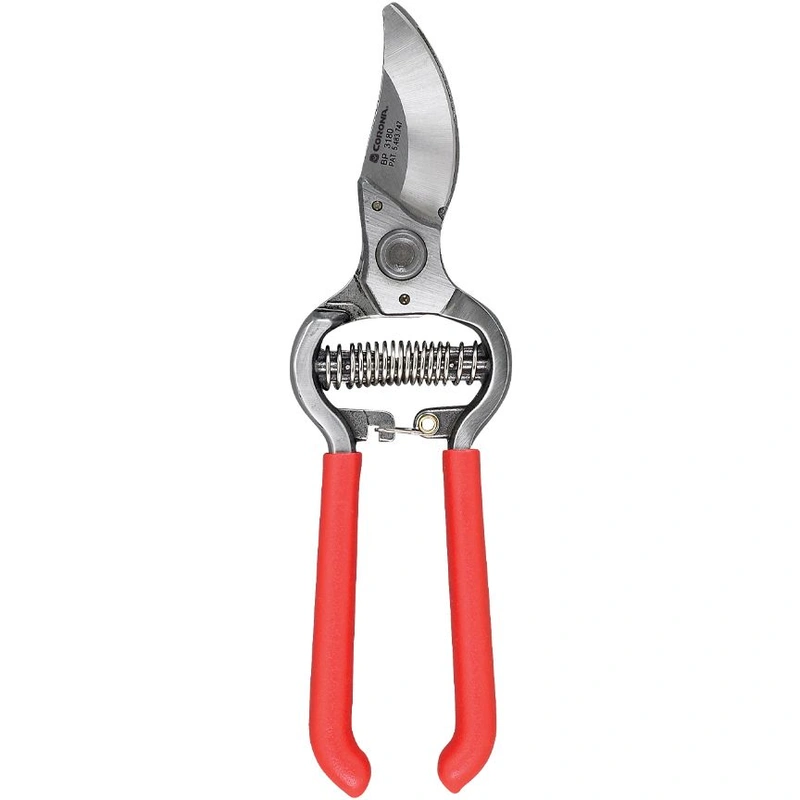
Hedge Shears
Hedge shears have long, straight blades with serrated edges. They are specifically designed for trimming and shaping hedges, shrubs, and topiaries. The shears can handle thicker branches and provide a clean, precise cut.
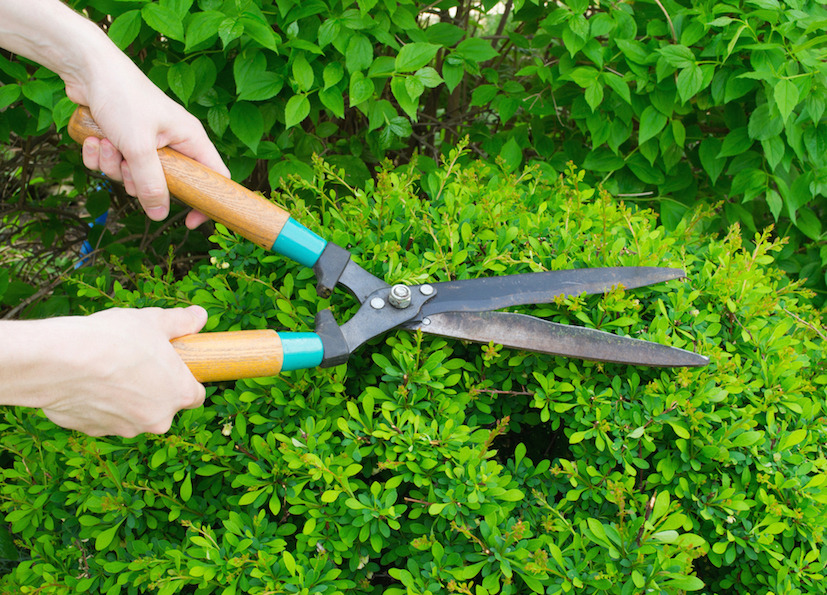
Anvil Pruners
They are designed for cutting thicker or dead branches and stems. Anvil pruners provide more crushing action and are suitable for tougher pruning jobs. Be careful while using this pruner, as it can crush or damage live branches.

Final Thoughts
Possessing gardening tools will not only boost your gardening tasks but also allow you to enjoy them. The tools help in performing the task with efficiency, ease, and perfection. Having your tool kit will enable you to take care of the garden at your own pace. Moreover, it reduces dependence on others and ensures routine garden maintenance.
